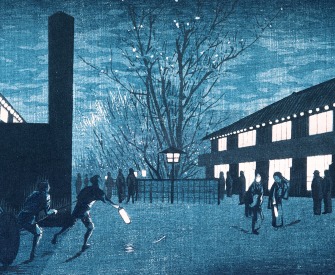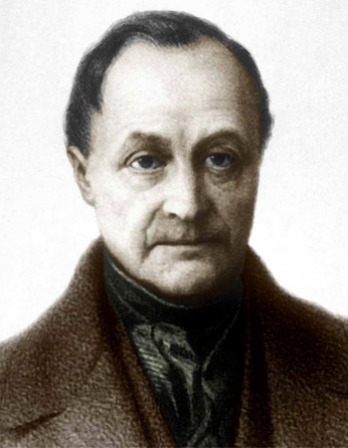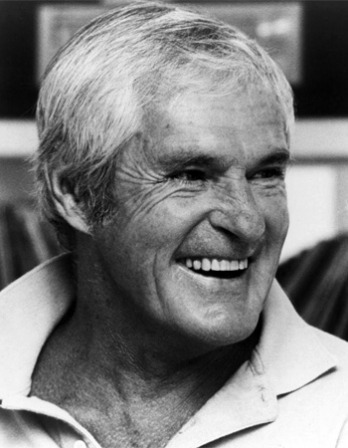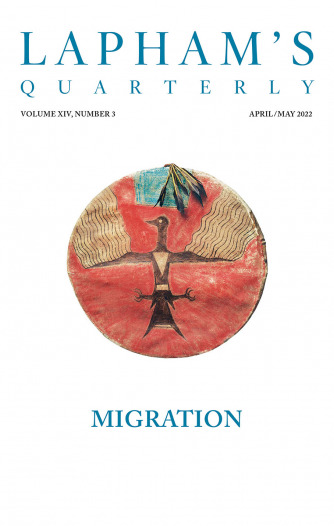Brains are the only things worth having in this world.
—L. Frank Baum, 1899
Seated Male Figure with Folded Hands (detail), by Édouard Vuillard, c. 1895. The Metropolitan Museum of Art, Purchase, Family of Howard Jay Barnet, in his memory, 1995.
Audio brought to you by Curio, a Lapham’s Quarterly partner
Carl Jung was wondering what to do next. In 1912, after publishing his major, two-volume Psychology of the Unconscious, he found himself struggling to understand the vast interpretive discrepancies between his colleagues in the field, noting that when faced with the same situation, even the same evidence, different psychologists tended to reach divergent conclusions. Sigmund Freud traced everything back to an instinctual sex drive, Alfred Adler to the ego’s lust for power, each imposing his own psychology on the material. Jung realized he tended to do the same thing. For his next project, he wanted to investigate these disparities—as he later recalled, he “needed to define the ways in which my outlook differed from Freud’s and Adler’s.”
By 1913, at the Fourth International Psychoanalytical Congress, Jung was ready to introduce a new schema. He defined two types of people: the extravert (his preferred spelling), who “gives his whole interest to the outer world, to the object, and attributes an extraordinary importance and value to it,” and the introvert, who “occupies the center of his own interest and becomes in his own eyes the only person worthy of consideration.” These qualities not only, in their extremes, marked different mental illnesses (hysteria and schizophrenia, respectively) but applied to different types of normal, healthy people—even psychologists.
The implications of Jung’s move were enormous. He was fundamentally denying that anyone could rise above the fray of their own mind and completely understand another person. Science could not attain impartiality because scientists classifying others were themselves of one type or another. For instance, scientists in general gave emotions short shrift in their theories because of how their own minds worked. “My books have been read largely by intellectuals,” Jung would later remark, “who have, of course, not been able to see feeling as rational, because feeling in them is thoroughly irrational.”
Jung’s proposal was a radical reorientation of human knowledge—in a commonly used intellectual metaphor, it was a kind of Copernican revolution. More than a century earlier, Immanuel Kant had made a similar move in philosophy, arguing that there was no stable center, that reality could not be perfectly, purely known; instead, what was knowable had to conform to our human ways of knowing. And in 1917, Freud described his own theories as a comparably dramatic shift, arguing in the eighteenth of his series of introductory lectures on psychoanalysis that his ideas offered a “great outrage against naive self-love”—the third one that humanity had been forced to undergo, after Copernicus’ discovery that our earth is not the center of the universe and Darwin’s finding that man is merely an evolved animal. This third and “most irritating insult flung at human megalomania” was, in Freud’s famous phrase, that the self is “not even master in his own home” but instead ruled by unconscious desires and forces. Jung, in a kind of combination of Kant and Freud, was proposing his own Copernican reorientation.
Jung continued to develop his ideas and in 1921 published Psychological Types, in which he proclaimed that every worldview “depends on a personal psychological premise.” No theorist
realizes that the psychology he sees is his psychology, and on top of that is the psychology of his type. He therefore supposes that there can be only one true explanation…namely the one that agrees with his type. All other views—which, in their way, are just as true as his—are for him mere aberrations [for which] he will feel a lively but very understandable distaste.
As a result, the scientist of the mind must either let multiple contradictory theories coexist “or make an attempt, foredoomed at the outset, to found a sect which claims for itself the only correct method and the only true theory.”
From the start, Jung’s apparent denial of objective truth in psychology appalled Freud and his followers, who felt Freud had the one true method for reaching the only possible conclusions. Hungarian psychoanalyst Sándor Ferenczi acknowledged in 1914 that Jung’s “classification doubtlessly offers some interesting perspectives” but wrote that it went too far: “The only questionable part is where Jung tries to extend his classification to psychology itself…He has let himself be carried away to an all too complicated and psychologizing explanation.”

Patient, Surrey County Lunatic Asylum, by Hugh Welch Diamond, c. 1855. © The Metropolitan Museum of Art, Gilman Collection, Purchase, Ann Tenenbaum and Thomas H. Lee Gift, 2005.
Aside from its complexity, Jung’s theory risked being obviously self-defeating. He had concluded his 1913 talk by saying, “The difficult task of the future will be to create a psychology that will do equal justice to both types.” But Jung’s relativism applied to Jung himself as well—he, too, was necessarily constrained by his own point of view. To develop his distinction of 1913 into a book that would do equal justice to both sides, he had to find a way to get outside his own head.
Jung went looking for an intellectual sparring partner who could help him overcome his own prejudices, and found one in a psychiatrist named Hans Schmid—an extraverted colleague confident enough to stand up to him. (He is sometimes referred to as Hans Schmid-Guisan, following the Swiss custom of married people hyphenating their surnames.)
Schmid was born in 1881, five and a half years after Jung. The two men met through their wives at a psychiatric conference in 1911, and Schmid came to Zurich soon afterward to study with Jung. Before long the professional relationship broadened into friendship. They went on bicycle tours and camping and sailing trips together; Schmid was pleasant company, even with the frequently off-putting Jung. In 1913, Schmid returned to Basel, where his warm, open, cheerful personality made his private practice a success. He was such a good listener, according to patients, that he was referred to as Seelenschmid, “soulsmith,” a pun on his name and the German word Schmied, meaning “smith.”
In 1915, Jung and Schmid started a correspondence meant to deepen their understanding of introvert and extravert personality types. Or at least that’s what Jung wanted. The easygoing Schmid wasn’t bothered by the distinction (he said it caused him “no real headaches”), but Jung thought that extraverted thinking was intrinsically inadequate, that feeling was irrational—in general, that any traits the opposite of his own were distasteful aberrations. “I have the feeling that you do not appreciate something,” Schmid wrote at one point, referring to Jung’s apparent disapproval of Schmid’s own personality, “and the most valuable thing in it to boot.”
Your mind’s got to eat, too.
—Dambudzo Marechera, 1978“For you,” Schmid wrote elsewhere, “thinking is life; for me thinking is something dead, even something deadly for life.” It was “absolutely incomprehensible” to Schmid how anyone could use abstract thought to get close to the world—“abstraction puts a distance between me and the object.” He felt that the most valuable connection with people and things comes, “on the contrary, only by giving oneself completely over to a feeling.” In another letter, Schmid approvingly cited Goethe’s rejection of the great and noble-sounding task to “Know thyself,” quoting Goethe (an extravert, according to the definitions they were working with): “Others know me better than I know myself. I can only know and correctly assess my relations to the outer world.” Jung rejected this idea, writing back that Goethe didn’t have the advantage of modern psychology.
The attempted collaborative effort quickly went off the rails, with Schmid refusing to accept Jung’s most basic descriptions of how their minds worked. No matter how neutral and fair Jung believed he was making them—how hard he tried to clarify, categorize, and explain—the discord between the two deepened. “I feel I am being devalued, which in turn makes it nearly impossible for me to respond spontaneously toward you,” Schmid wrote, pointing out that understanding how people are different is not the same as valuing how they think and feel. Which was not to say Jung was even understanding his friend correctly. Jung said Schmid’s view “is actually a caricature”; Schmid replied, “I am not surprised you say that…your concept is just as much of a caricature.”
Schmid kept saying that discordant relations among different types of people were fine—in fact essential for eventually reaching harmony—while Jung saw such discord as profoundly negative. “What you call mutual violation,” Schmid wrote, “I consider an extremely ingenious arrangement of nature, only instead of the term violation I would say interaction.” He gave an example: introverts are like motorboats and extraverts are like sailboats, each facing their own problems (running out of fuel versus lacking wind). It’s frustrating to have to tow the other kind of boat when it fails. Each can either develop its own strength (more fuel-efficient motor or better sailor) or compensate for its weaknesses (by adding a backup sail or backup motor, though each compensation could sabotage the original preference). Either approach—becoming more who you are or more well-rounded—has its value and its pitfalls. Schmid came back to this image again and again, while Jung nitpicked: this isn’t what the wind symbolizes; that’s not how a motorboat works.
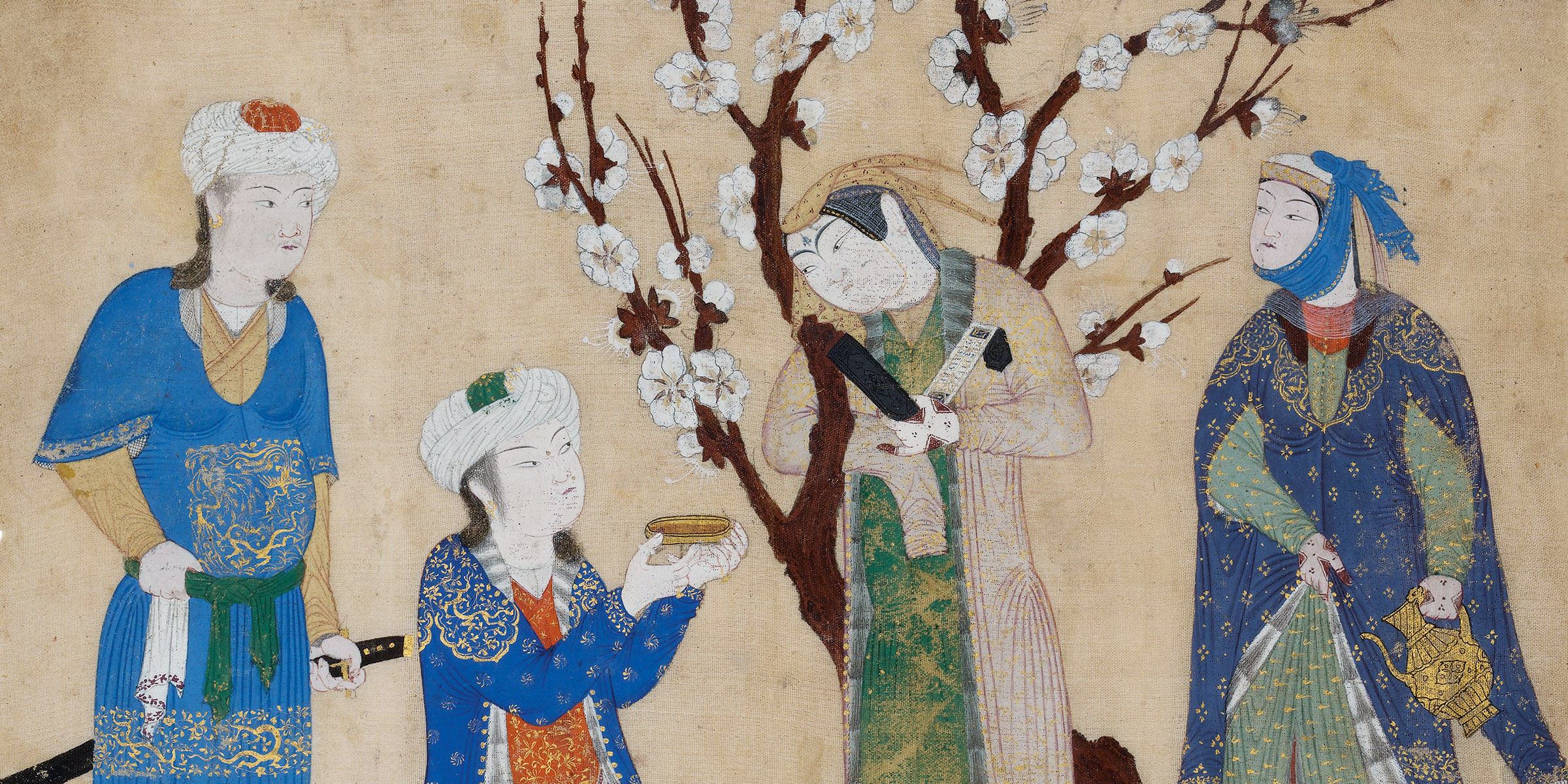
Wine Drinking in a Spring Garden (detail), Persian silk album leaf, c. 1430. © The Metropolitan Museum of Art, Cora Timken Burnett Collection of Persian Miniatures and Other Persian Art Objects, Bequest of Cora Timken Burnett, 1956.
The dialogue staggered forward in increasing mutual frustration. “The contrast is irreconcilable,” Jung wrote to Schmid; “nonsense,” he scribbled to himself in the margin of one of Schmid’s letters. Yet they couldn’t even agree about whether they were disagreeing. “You read a mistrust into my last letter that wasn’t there,” Schmid calmly insisted, “and you speak, therefore, of mutual mistrust…my first reaction was being greatly astounded that you took a large part of my remarks personally.”
By his fifth letter, Jung had had enough. He wrote FINAL ONE across the top, and opened without preamble: “Your letter strengthens my conviction that reaching an agreement on the fundamental principles is impossible, because the point seems to be precisely that we do not agree.” To one of Schmid’s arguments he responds, “I’ve known that for ages”; about one of his own he says, “The distinction seems to have escaped you.”
While Schmid admitted that the two men had “a completely different set of premises,” he continued, in his own optimistic, relationship-building fashion, to write at least four more letters to Jung after the FINAL ONE. But eventually he, too, ran out of patience and unleashed a cold and sweeping denunciation, claiming Jung didn’t value love or know how to express it, citing three large classes of evidence: Jung’s earlier works, where he characterized love as hunger, a need, something infantile; Schmid’s observations of how Jung treated people around him; and Jung’s overreactions and tirades in these very letters, where he was utterly unable “to emotionally acknowledge [an extravert’s] empathy, his sympathy, his love and friendship.”
That both men were remarkably wise and self-aware makes it all the more fascinating to track their dialogue as it descends into mutual misunderstanding, recrimination, and frustration. Jung in particular comes off as a jerk—not surprising, as he was well known for being autocratic and arrogant, cruel and dismissive to other perspectives, biting and sarcastic to those who dared disagree with him. Jung’s most reliable biographer, Deirdre Bair, calls Jung “juvenile, aggressive, and unfair” to Schmid, with the exchange disintegrating, like other such correspondences of Jung’s, “into hectoring, chastising, and correcting.” But in this case, maybe he was just doing his job, playing the role of imperious, introverted visionary against the other man’s extraverted, socially adept collegiality. John Beebe, coeditor of The Question of Psychological Types, a 2012 English translation of the Jung-Schmid letters, takes this view, arguing that Jung was unafraid to take a one-sided stance—fully expecting, and wanting, Schmid to refute it—and was willing to look bad in order to polarize their positions as much as possible and gain clarity about their differences.
Either way, the conversation certainly demonstrated the divide it sought to reconcile: Jung aggressively trying to pigeonhole Schmid, Schmid declaring over and over again that he wanted to be valued, not understood.
By the time Jung published Psychological Types more than five years later, in 1921, it was clear that his gambit had paid off. He had broadened his perspective; his descriptions of types other than his own were now almost as positive as his descriptions of his own psychological qualities—even genuinely fair and respectful, most of the time. Much of the credit for this shift has to go to Schmid.
Jung had gained not just empathy but also the intellectual clarity he was looking for. He stopped thinking of introverts as inherently intellectual and extraverts as inherently emotional and realized that these were independent factors—likely because Schmid had kept saying so. During their correspondence, Jung wrote to Schmid that extraverts “simply don’t think things through enough,” but he came to understand that this wasn’t the case. Emotions aren’t just irrational—they are valid ways of comprehending the world. Extraverts aren’t shallow and childish. Self-awareness isn’t only an intellectual task.
A mind lively and at ease can do with seeing nothing, and can see nothing that does not answer.
—Jane Austen, 1815Not only did Jung learn to distinguish the dichotomies of introvert-extravert and thinking-feeling, he added another one: intuition-sensation. This, too, was a lesson he had to learn from someone else—most likely Maria Moltzer, his Dutch psychoanalyst colleague and the one from whom Schmid had borrowed the metaphors of the motorboat and the sailboat. Sensation types focus on the concrete here and now; intuition types see through the lens of preconceived patterns and imagined possibilities. Jung—who opened the correspondence with Schmid by admitting he was “one of those people who must a priori always have a viewpoint before being able to enter into something”—was probably more of an intuitive type, by his own eventual definitions, than the thinking type he kept calling himself in the letters.
Jung would later describe these four main psychological functions as being “somewhat like the four points of the compass.” You could shift the axes or change the labels, but there would still be four main psychological orientations. Everyone lives their life primarily using one function, in either an introverted or extraverted manner, making eight types. Since any type has one or another secondary function—for instance, thinking linked to intuition is speculative, while thinking linked to sensation is practical—that makes sixteen different kinds of human psychology. If this terminology sounds familiar, that’s likely because it became the basis of the Myers-Briggs test, a popularization of Jung’s personality types invented in America in the 1940s and made famous starting in the late 1970s.
Still, Jung insisted that all real people are a mix of types. He described how different parts of the self compensate for others—in intellectual types, for example, emotional forces act out in primitive and uncontrolled ways. He explained how people of dissimilar psychological types will tend to pick up on different sides of one another’s conscious behavior and unconscious expression, depending on what matters to them, and will misinterpret through the lens of their own values. An introvert, for example, will tend to try to account for “all the possible reasons and intentions” behind an extravert’s actions; he “reflects, dissects, puts constructions on it.” Meanwhile, the extravert is just living his life. This insight could almost have been taken directly from an explanation given by Schmid in a letter: “The extravert does what he does not in order to achieve anything; he acts because he must act.”
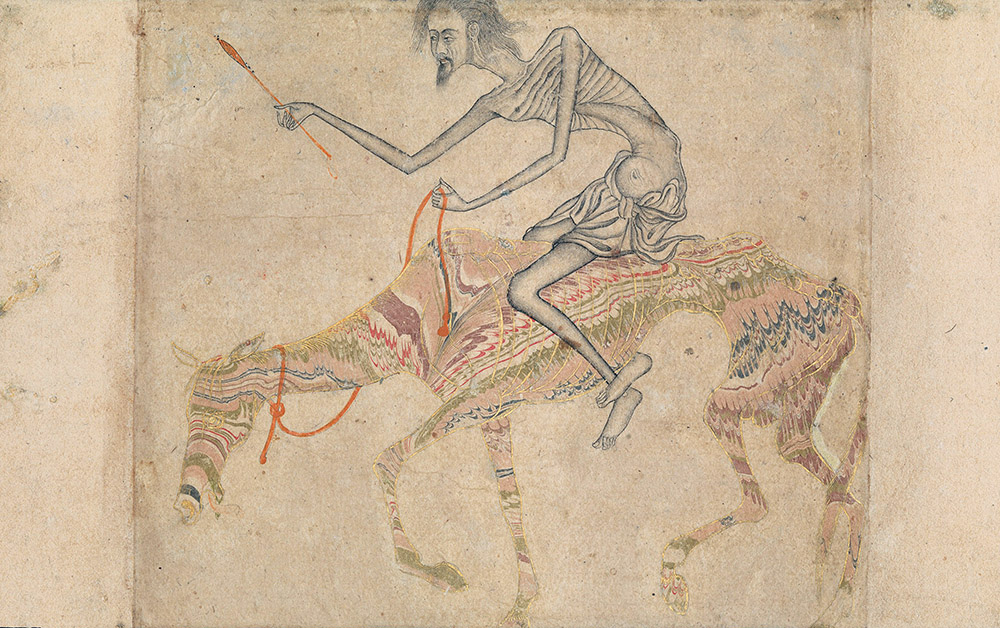
Emaciated Horse and Rider, India, c. 1625. © The Metropolitan Museum of Art, Rogers Fund, 1944. Symbols of bodily desire in Sufi imagery, horses are often shown starved and beaten.
The introvert’s need to find hidden meanings behind the actions of others—which drove Schmid crazy during his correspondence with Jung—undergirds the entire project of Psychological Types, of course: Jung is doing what introverts do. And yet he manages a delicate dance around his own limitations. Even as he attempts a kind of Olympian insight into all the different types, he again and again admits his own partiality, saying straight-out that Freud is as right in his way as Jung is in his, and that the desire for a totalized view, which leads to a theory like Jung’s, is a fact of Jung’s own psychology—that it was almost impossible for Jung to recognize the existence of types other than his own, that it took years, and that he presents them inadequately in his book.
For Jung these limitations of self and mind had the highest possible stakes. In the epilogue of Psychological Types, he situates the implications of his arguments “in our era,” mentioning the French Revolution and its motto liberté, égalité, fraternité, invoking the political ideals of the day that would have been on his readers’ minds—socialist movements sweeping Europe, the Communist revolution in Russia—before reaching a dire conclusion: “No social legislation will ever be able to overcome the psychological differences between men.” All political ideals favor one kind of person over another: freedom is painful to those who need structure; privacy has a pro-introvert bias. And it’s not only society; so, too, in science, and in every other human interaction:
As a rule, the partisans of either side attack each other purely externally, always seeking out the chinks in their opponent’s armor. Squabbles of this kind are usually fruitless. It would be of considerably greater value if the dispute were transferred to the psychological realm, from which it arose in the first place. The shift of position would soon show a diversity of psychological attitudes, each with its own right to existence, and each contributing to the setting up of incompatible theories.
Most fundamentally of all, “it is a fact, which is constantly and overwhelmingly apparent in my practical work”—and since confirmed in every comment section on the internet—“that people are virtually incapable of understanding and accepting any point of view other than their own…Every man is so imprisoned in his type that he is simply incapable of fully understanding another standpoint.”
To be too conscious is an illness—a real thoroughgoing illness.
—Fyodor Dostoevsky, 1864Jung, for his part, did what he could. His Psychological Types contains one of the most subtle, nuanced, and perceptive accounts of the human personality ever published. “The introvert cannot possibly know or imagine how he appears to his opposite type,” he wrote in the book, “unless he allows the extravert to tell him to his face, at the risk of having to challenge him to a duel.” That is what he did with Schmid—and managed to come out the other side.
The two men had originally planned to turn their correspondence into a book, or at least a pamphlet for their inner circle of colleagues and patients. Schmid particularly felt his side needed a proper airing rather than being entirely presented through the filter of Jung’s prejudices. In the end they felt that their terminology at the time, their understanding, was in too preliminary a state for the letters to make sense to others. Decades later the editors of Jung’s Collected Works also passed on including them. Now, at a distance of more than a century, the sometimes garbled and inconsistent early stage of Jung’s theory matters to a reader less than the gripping personal drama: the conflict between the two men, and Jung’s painful struggle to achieve a more universal understanding.
Jung and Schmid stayed friends after the correspondence ended. Jung often referred patients to Schmid, and four years after Psychological Types was finally published, he wrote that Schmid was “a very decent and good man, rather original and profoundly extraverted, artistic, and intuitive.” Jung had come to value, not just understand, personality types unlike his own. He had pushed the boundaries of his thought and feeling.
But no matter how hard he’d tried to transcend his own point of view and do justice to all, the effort was ultimately still “foredoomed.” Jung’s theory, for all its far-reaching insights, found no more universal acceptance than anyone else’s attempt to encompass all the ways of being human.

